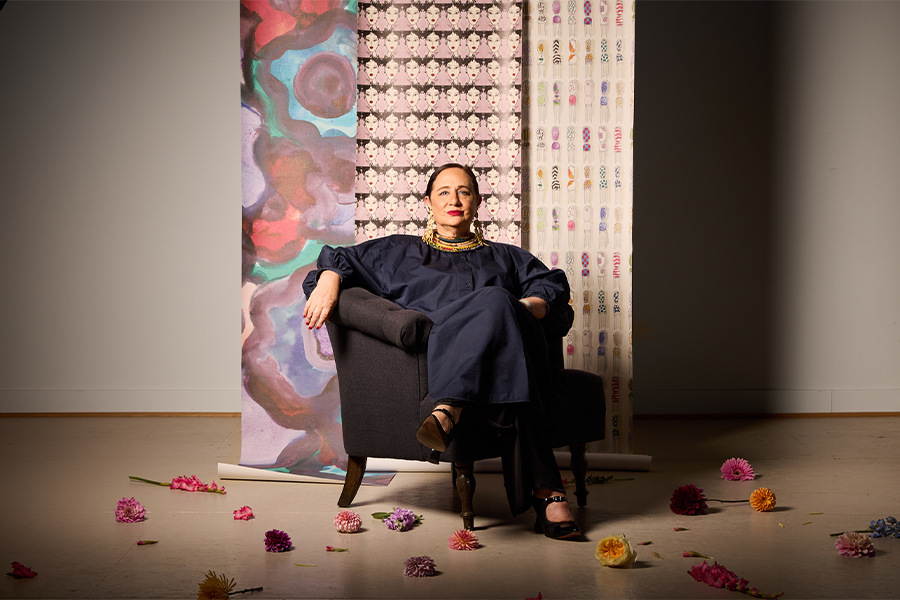From designing the iconic S-Chair for Cappellini to being awarded an OBE by Her Majesty the Queen, the self-taught Tom Dixon took an unconventional path to becoming one of the UK’s most renowned designers.
In 2002, he launched his eponymous line of products, which has evolved to include lighting, seating, and an upcoming outdoor collection. With the company now under new CEO Henry James, Dixon is more motivated than ever to push design boundaries.
What inspired you to create an office chair for your new upholstered furniture range, Fat?
Tom Dixon: It was a reaction to Covid. Bringing home a [traditional office] chair didn’t work. They look awful and had almost too much functionality for the way it was being used. It gave us time to rethink what the home office chair might look like. Then to have it shown by Steelcase, one of the biggest office furniture companies in the world, was interesting.

The Fat modular sofa
What did you do differently?
TD: It’s about color, proportion, and materiality. We got rid of excess ergonomics, because people are working differently from home. They’re not sitting eight hours a day in the same position. They get up to make a cup of tea or walk their dog. Some of those specific mechanisms are vestigial in the home anyway, so that was the thinking.
Why was now the right time to launch a new collection?
TD: It’s been a long time since we’ve launched furniture. We got so wrapped up in lighting that we forgot that a lot of our lighting has been successful not through lighting shops but through furniture shops. It became a bit distressing that we were being shown above sofas we’re capable of doing ourselves. It’s a modular set, and one [of the sofas] can snake back on itself, so it’s very architectural.
What is your response to companies that create copies of your products?
TD: Our Beat lighting collection has been extensively copied. We did an audit online and found 800,000 units that are available on websites around the world. That’s 20 times our production annually, and all for a quarter of the price. We had a look at one, and it had no light bulb and was made out of aluminum [instead of brass]. We decided to do an authorized fake ourselves rather than fight them. Our version is a thicker recycled aluminum—it’s not masquerading as brass—with a proper LED that is half the price.
Why create your own, less expensive version?
TD: We could have spent time being angry or trying to take legal action, but realistically, design isn’t very well protected. We’ll always get copied if we have a good idea. [This] allows me to tell the story of the original and speak about how we use the idea of the copy to make a better product.
You’re also working on your first outdoor collection.
TD: It’s based on the Hydro chair we did a couple of years ago. It’s a great chair, but it’s too expensive, so we re-engineered it to make it more comfortable and cost less. It’s similar in terms of the structure, but it now has tubular legs, which makes it much more structurally sound and stackable.
What is your product design philosophy?
TD: I like things to be reduced to their absolute essentials. Often, it’s trying to squeeze these very pure geometries into something that also needs to be comfortable and aesthetically pleasing. That takes a lot more work than you think, but that’s the job.
This article originally appeared in HD’s August 2024 issue.


